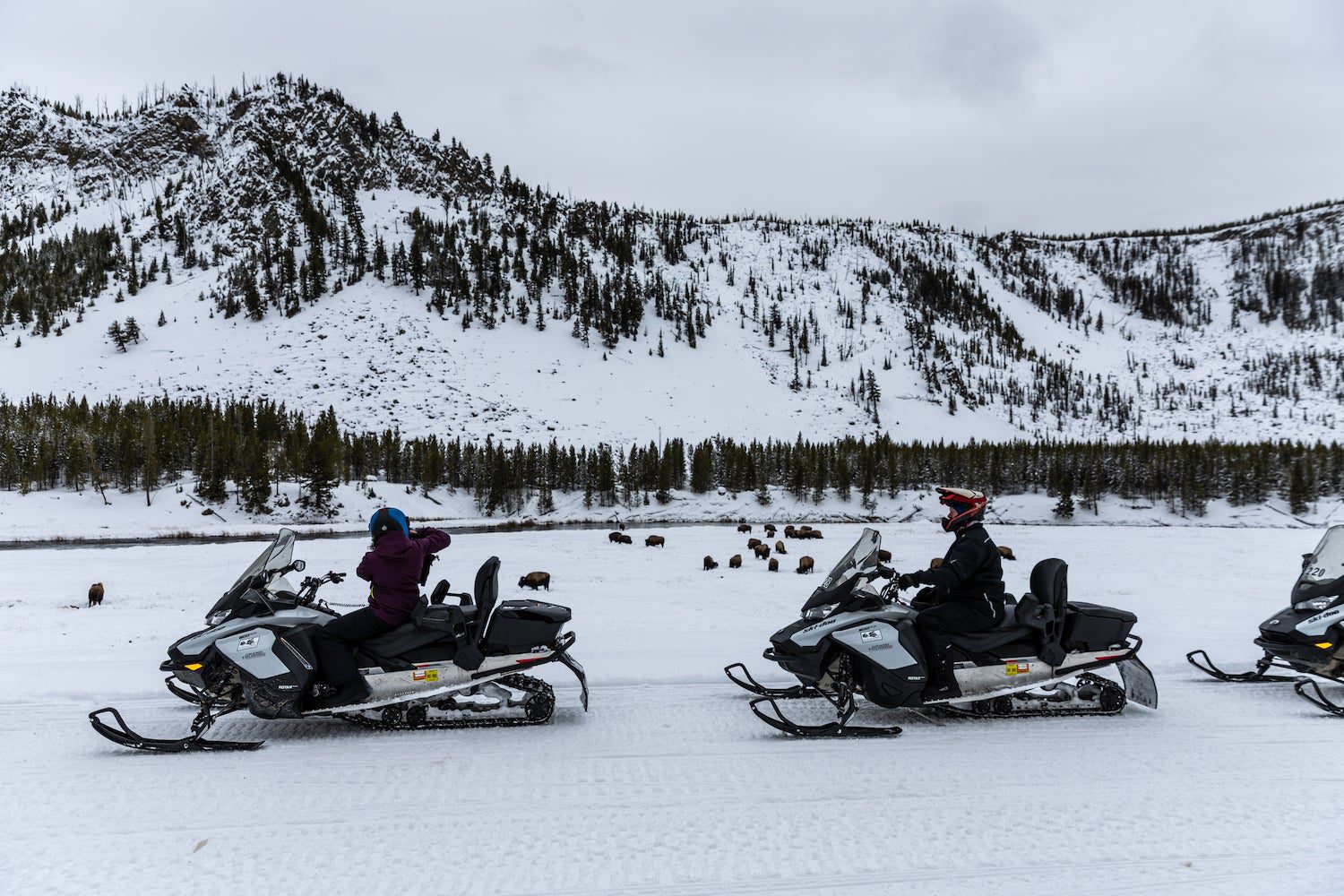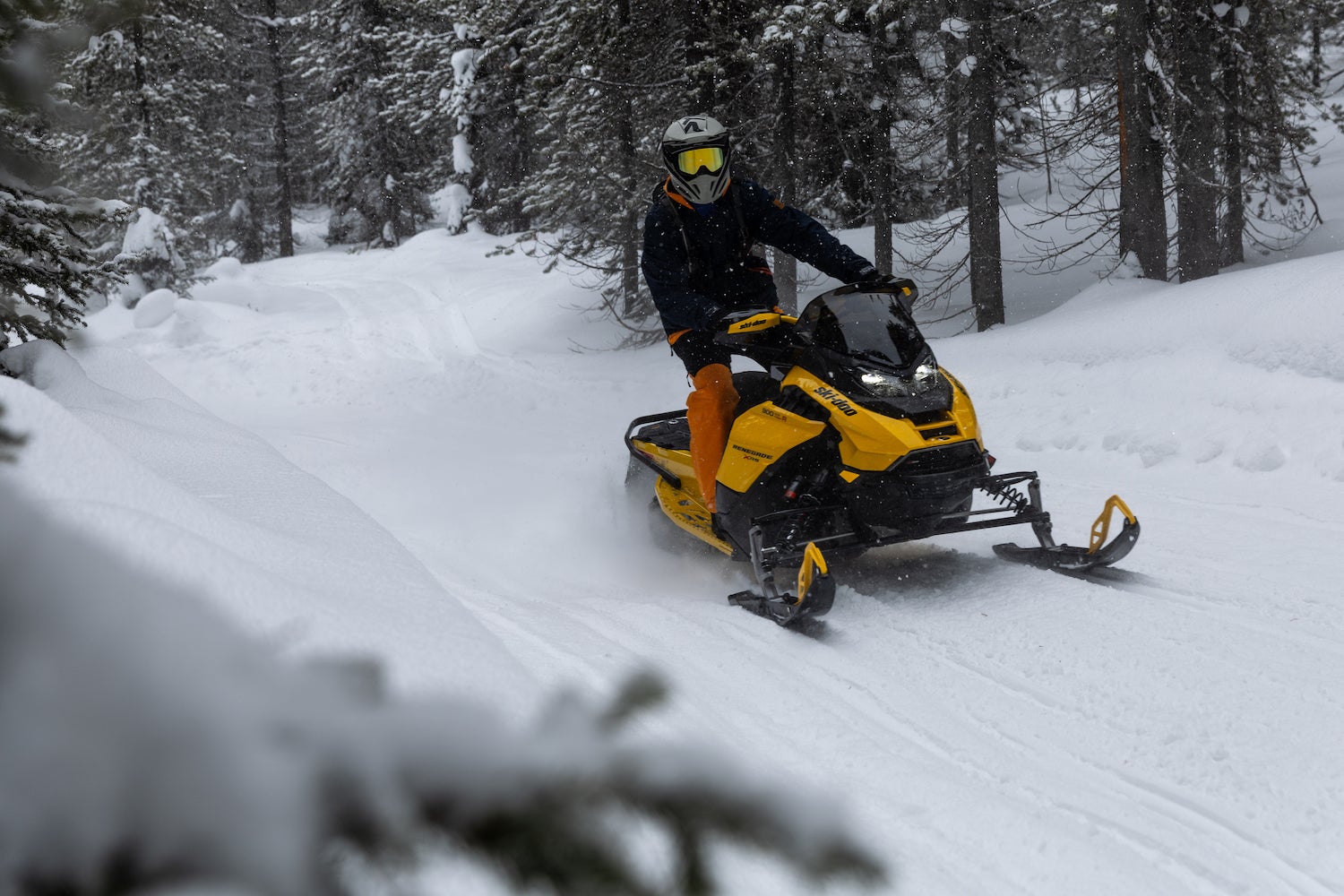Filled with impressive hydrothermal and geological features and thriving wildlife across 2.2 million acres, Yellowstone National Park is a valuable national asset. It was also the first national park in America; former president Ulysses S. Grant officially designated it on March 1, 1872.
The national park preserves its beauty with a strict set of environmental rules that prioritize the welfare of the park. For instance, during winter, only specific types of vehicles and snowmobiles are permitted on the groomed trails, and they must meet the park’s Best Available Technology (BAT) standard for emissions. Currently, only one brand of snowmobile meets these criteria: Ski-Doo.
Snowmobile regulations and restrictions in Yellowstone
In 2023, Yellowstone National Park attracted 4.5 million visitors. Summer is the busiest period for Yellowstone, when children are out of school and families are embarking on road trips across the country. Winter, on the other hand, is more peaceful and tranquil. The bears are hibernating, the sky fluctuates between gray and a surreal, intense blue, and the park is draped in perfect crystalline snowflakes.
To traverse the trails once snow covers the ground, a limited number of snowmobiles and snowcoaches (vans or other vehicles equipped with large snow tires) are permitted to operate within the park. Snowmobiles were first allowed into the park in 1963 to increase winter attendance, as visitors could explore more of the park compared to walking or cross-country skiing; the machines also provided access for those with physical limitations. This continued until 1997, when the Fund for Animals, an animal rights organization, filed a lawsuit to prohibit snow grooming on paved roads in the park. Since snowmobiles were only allowed on groomed roads, the ban would have effectively put an end to snowmobile usage as well. filed a lawsuit Ultimately, snowmobiles were still allowed, but with new protections in place for the Yellowstone ecosystem. Through this process, the national park service became aware of new emissions technology available in four-stroke snowmobile engines, which reduced carbon emissions by over 70% and decreased noise levels by about 50%.
[Related: There’s more magma under Yellowstone than we thought—but don’t panic]
As a result, updated regulations now stipulate that snowmobiles entering the park must operate at or below 67 dBA (the measurement of sound levels) and must be certified for specific emissions levels. According to the National Park Service, a snowmobile “will be certified for six consecutive winter seasons following its manufacture or until the snowmobile travels 6,000 miles, whichever occurs later, and model year 2015-2017 snowmobiles must have less than 6,000 miles on the odometer to be approved.”
Only Ski-Doo snowmobiles with four-stroke ACE (advanced combustion efficiency) engines are allowed on the trails within Yellowstone National Park. Image: Ben Dann/Ski-Doo

YouTube channel providing 4 solutions does a great job explaining the variation between two- and four-stroke engines and their operation. Of the two Ski-Doo engine setups allowed at Yellowstone, the 600 ACE is the most fuel efficient with a rating of 28 miles per gallon at 60 horsepower, while the 900 ACE generates 90 horsepower and achieves 21.8 miles per gallon. These are off-the-shelf Ski-Doo engines available for anyone to purchase, not just those traveling through Yellowstone National Park.
“From the beginning, [the ACE engines] were designed to be efficient,” says Steve Cowing from Bombardier Recreational Products (BRP), the company that owns Ski-Doo. “This includes the sizing of the valve, the stroke, the oil pump, and all the small details.”
The future of electric snowmobiles
Ski-Doo’s parent company aims for all of its facilities to be carbon neutral by 2030 and for 50 percent of its products to be electric by 2035. Ski-Doo introduced two all-electric sleds last year, but it’s careful to note that they have limited range and are designed for short distances. Range anxiety is the same issue auto manufacturers face as infrastructure ramps up, Cowing says.
Currently, the electric snowmobile cannot cover the distance from West Yellowstone to Old Faithful and back on one charge, so it provides a different experience. And for someone looking to explore as much of Yellowstone’s natural beauty as possible, it’s much less satisfying.
So far, customers who have tested out the new electric sleds are impressed with the performance and power. It’s only the range that’s holding them back, and the brand isn’t giving up on electric power.
“We need to be cleaner and quieter,” says BRP product development manager Frederic Desjardins. “The social perception of our industry is very important to us.”
Ski-Doo’s snowmobiles meet the National Park System’s stringent Best Available Technology (BAT) standards for emissions. Image: Ben Dann/Ski-Doo

Viewing the park from the seat of a snowmobile with heated seats and handlebars is a fun way to see it all within the parameters of safety and ecology, and manufacturers and tour guides are eager to stay within the lines. The area around Yellowstone, including scores of snowmobile guides, hotels, restaurants, and other hospitality depend on the industry to keep up with the standards and keep the park snowmobile-friendly. At the same time, it’s critical that manufacturers keep improving. Desjardin says each snowmobiler he knows loves nature; it’s one thing they have in common with the people who like to walk in the park.
“Snowmobilers see more nature in one day than most people see in one season or even three seasons,” says Cowing, a snowmobiling enthusiast and 22-year veteran of the industry. “People who live in West Yellowstone and in these parks understand it really well. They really are stewards of the land.”
Correction: The initial form of this article inaccurately mentioned the date Yellowstone became a national park.
The regulations of the park safeguard animals and maintain a peaceful environment.









